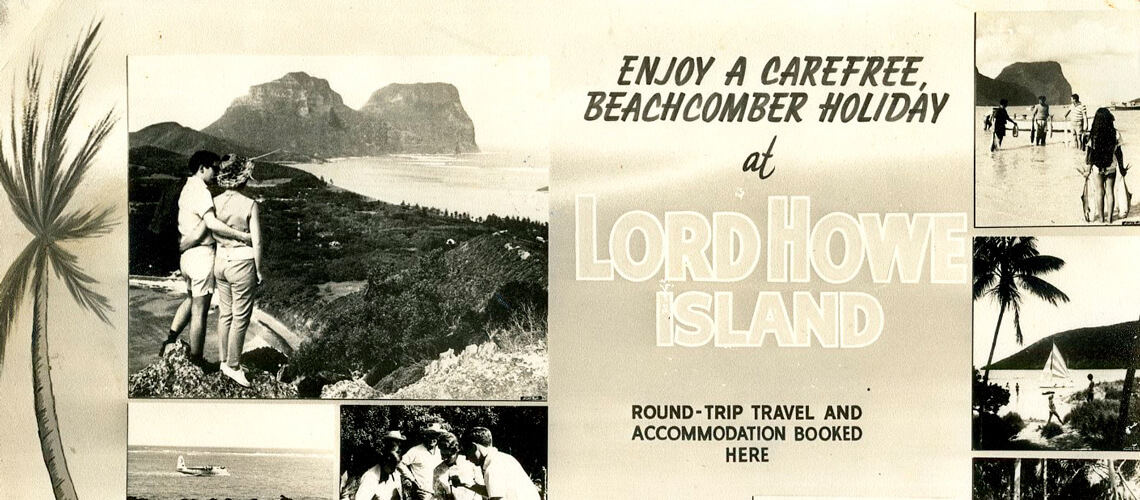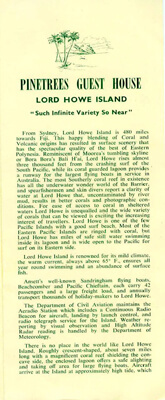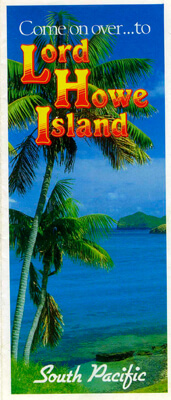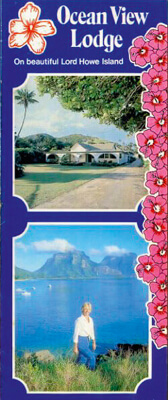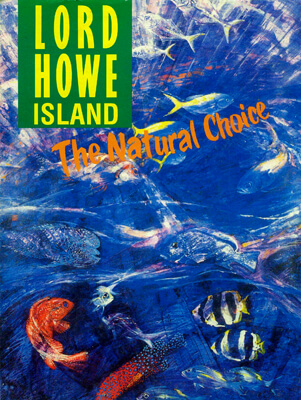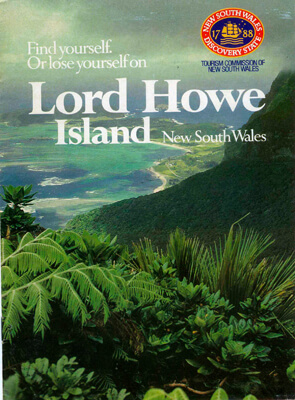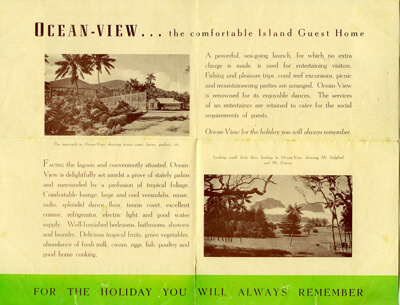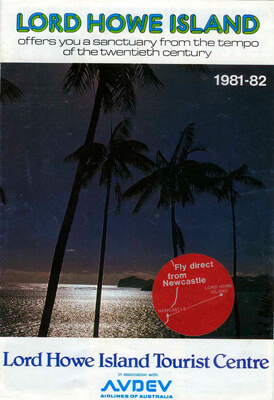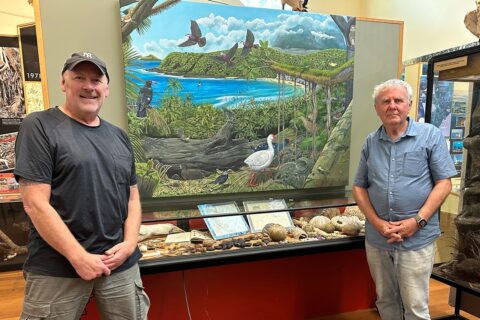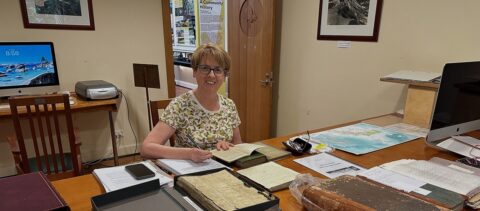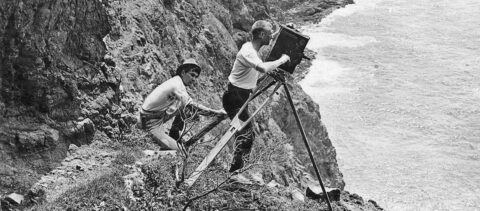The early days of tourism
Tourism on Lord Howe Island began before 1900, with local families hosting guests in their homes. As demand grew, additional buildings were constructed to accommodate visitors, but meals were still provided in the family homes, which became known as guest houses. The earliest two guesthouses were Oceanview and Pinetrees.
Brochures promoting tourism on the island began to appear in the 1920s. In the early days, visitors typically arrived by large ships that transported both freight and passengers in this part of the Pacific Ocean, or by yachts whose owners sailed to the island. The Morinda was the longest-running ship that served the island, and there are people today who can recall travelling on that vessel.
One of the travel brochures from Oceanview Guest House of the day advertises:
“A pleasant sea voyage of two days from Sydney (480 miles) in Burns Philp comfortable steamer Morinda takes you to Lord Howe Island with its magnificent scenery and tropical foliage.” It boasts facilities at the lodge: “ Music, Radio, splendid Dance Floor, Tennis Court, excellent Cuisine, Refrigerator, Electric Light, and good water supply. Delicious tropical fruits, green vegetables, abundance of fresh milk, cream, eggs, fish, poultry, and good home cooking.”
After World War II, flying boats serviced the island from Rose Bay in Sydney Harbour. The flight was a long three-and-a-half hours, but it was remembered as a romantic adventure to arrive and land on the lagoon with a spray of water on the windows. The flights were difficult to schedule and sometimes unreliable because the flying boat had to land on the lagoon at high tide, and could only do so if the weather was calm. However, it was a quicker form of transport to the holiday destination.
More island families started small guest houses such as Somerset, Avalon, Banyan, Leanda Lei, Valdon, Trade Winds, Sea Breeze, and Trader Nicks.
One of the Pinetrees Guest House brochures of the day says:
“From Sydney, Lord Howe Island is 480 miles towards Fiji this happy blending of Coral and Volcanic origins has resulted in surface scenery that has the spectacular quality of the best of Eastern Polynesia. Reminiscent of Moorea’s tumbling skyline or Bora Bora’s Bali H’ai, Lord Howe rises almost 3,000 ft from the crashing surf of the South Pacific, while its coral guarded lagoon provides a runway for the largest flying boat in service in Australia.”
It boasts:
“The house maintains a fleet of bicycles which are hired at 15 shillings per week each. There are a couple of ping pong tables, several sets of quoits, darts etc. A 56 foot floor for dancing with electric amplifier and Ronisch piano contribute to the entertainment. The flat rate tariff without extras includes the services of an experienced guide and fisherman for launch trips, coral excursions, aqua-planing, barbecue picnics, conducted truck trips for island sightseeing and fishing.”
“Comfort is the first consideration in the matter of dress, which is mainly informal, shorts and shirts and slacks being worn by those who wish to do so. Most people change for dinner at night, men into slacks and sports coat or similar, ladies into frocks. At local dances held twice a week dress is optional” !!
Travel by air made the island more accessible for tourists
With the construction of the airstrip in 1974, land-based aircraft made air travel more reliable and affordable. More guest houses were built, but from the 1980s most converted to self-contained accommodation holiday units. With this, a number of shops and restaurants have opened to cater to this type of tourism.
With World Heritage Listing in 1982 there has been an emphasis on the natural environment and a number of locals started tour businesses that provide world-class experiences for the visitor to be able to explore and learn about the unique environments, above and below the water. Construction of the Museum in 2000 has provided a world-class facility for visitors to come and learn about the environmental and cultural history through displays, regular audio-visual lectures, video screenings and presentations by visiting scientists.
The printed travel brochures over decades have reflected these changes. The museum holds a very good archive collection of these travel brochures, and some are presented here.
Even though the mode of transport has changed, the accommodation style and dining upscaled, the one common thread all through time in all of these travel brochures is the attraction of the Island as a destination with stunning landscape, variety of experiences to be enjoyed in the natural landscape, the fine hospitality and the quiet unhurried travel experience.

